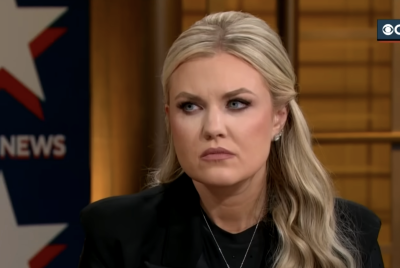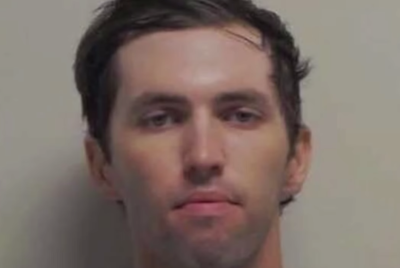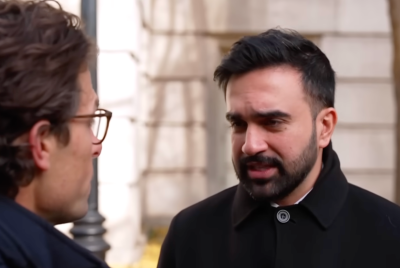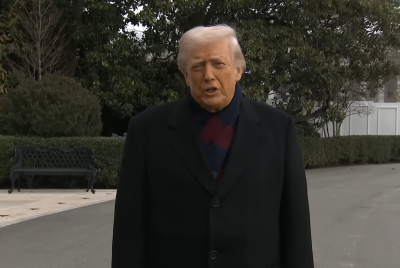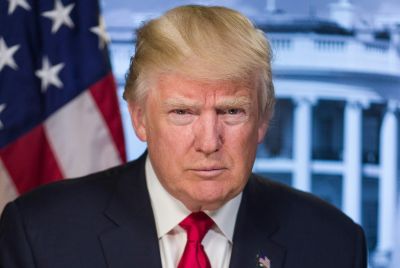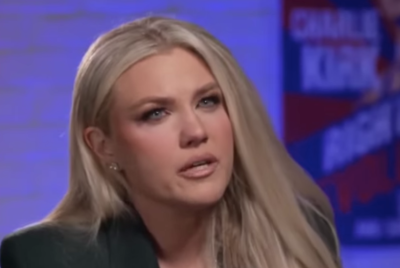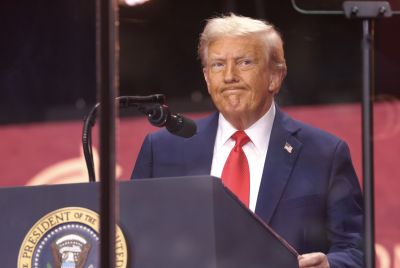British PM Theresa May caught holding hands with US President Donald Trump
Body language expert and psychologist Judi James explains why May and Trump held hands.
While both Theresa May and Donald Trump were keen to impress upon the global audience tuning into their first joint press conference in Washington of the "special relationship" between their two countries, a photo of the two leaders seemed to indicate their own rather special bond.
The pair were photographed holding hands as they took a walk through the White House, in a candid moment, just before the press conference.
The image has sparked a social media meltdown with commentators expressing their horror at the unexpected display of affection.
"Theresa May makes a speech where she goes on about a "special relationship" and not 24 hours later she's holding hands with Trump? "wrote one incredulous Twitter user.
"My head has gone with the pictures of Trump & May holding hands. That was my breaking point," said another.
"I've seen some pretty horrible things. But May and Trump holding hands?"
"Inquiring minds want to know... just how well are they getting to know each other?" remarked one commentator.
Why are Trump and #TheresaMay holding hands does he know how to talk to a woman without touching her pic.twitter.com/uX7gqK2Ifh
— Orli Matlow (@HireMeImFunny) 27 January 2017
Both leaders used the news conference to reinforce their commitment to the "special relationship" between the US and UK, with Trump stating: "We pledge our lasting support to this most special relationship."
May, who was the first world leader to visit Donald Trump in Washington after his inauguration last Friday, said an "even stronger special relationship" was in the interests of the wider world.
While May and Trump have made a public declaration of their special relationship, we asked body language expert and psychologist Judi James to offer her insight what might have prompted the global leaders to hold hands on the world stage.
MAY GIVES TRUMP A LESSON IN POWER DISPLAYS
It was clear from the moment that May stormed into this press conference that it was going to be her show. She used the famous Thatcher trick of walking quickly, which tended to have men trailing in the ex-PM's wake, and she splayed her arms slightly at the rostrum in a way that looked confident and - dare I say it - presidential. It looked like her press conference at the beginning and it was clear for most of the session that her political leadership experience in the role and his lack of it was showing through.
Trump read his speech in a low voice, squirming slightly in a rather boyish way. For a man we're used to see showboating and ad-libbing it was a new look. When May took her turn she used some strong control devices including announcing their plans and agreements and doing 'leading' nods to Trump to nudge and push him and encourage endorsement. The technique suggested she might just have given him a verbal pasting in their meeting and he made no effort to disagree with anything she said.
When the questions started May was still in visual control but following some direct questions from the UK press Trump began to get his defensive alpha pose back, standing taller and becoming more dominant. He began to do a single-handed performance with more of his ad-libbing style so that May was having to throw her own answers in at the end. His body language suggested some genuine admiration for May but when he spoke about 'Liking' or 'Disliking people he seemed to be saying that for him the word 'Relationship' is a very personal thing rather than anything to do with diplomacy, suggesting his mood might change quickly and suddenly and this was reflected in his body language.
And then there was the hand-in-hand shot. It's hard to see how or why this happened but it wasn't indicative of the rest of their signals because May had been quite careful to keep things at arms length. Perhaps Trump thought May was wearing the same height of heel his wife and daughters wear and needed similar assistance around the stairs or maybe the two leaders were more friendly away from the more formal press poses. It would be hard to imagine he'll do the same for Putin and other world leaders but it should be fun to watch if he does!
Judi James is a British language expert, psychologist and published author who has appeared on Big Brother's Bit On The Side, Xtra Factor, BBC News, CNN and Sky News amongst other programmes.
© Copyright IBTimes 2025. All rights reserved.




